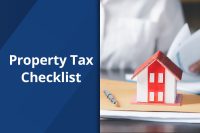Where Do My Property Taxes Go? How Your Property Tax Bill is Allocated

Here’s the answer to the question, “Where do my property taxes go?”:
- Your property tax bill is a collection of taxes levied by multiple local entities, including school districts, cities, counties, and special-purpose districts.
- Each taxing entity applies its own tax rate to your property’s taxable value, which all adds up to your total bill.
- A lower appraised value, achieved through a protest, directly reduces the taxable value for all of these entities, providing a significant impact on your total bill.
- Gill, Denson & Company is here to assist you in your property tax protest, ensuring you only pay your fair share of taxes.
Understanding Your Texas Property Tax Bill
Many Texas homeowners struggle with large property tax bills and naturally wonder, “Where do my property taxes go?” It’s natural to wonder what, exactly, you’re paying for. Well, your property tax bill is actually a collection of taxes levied by multiple local government entities. This is just part of how cities fund many of their public services, with other funds coming from fees, sales taxes, the federal and state governments, and other sources (GFOA).
It’s important to note that the taxing entities are separate from the Central Appraisal District (CAD) and the Tax Collector’s office. The CAD is responsible for appraising the taxable value of your property, while the Tax Collector’s office is responsible for collecting the taxes on behalf of the government entities.
Next, we’ll break down the allocation of your property tax dollars, showing how each part of your payment funds essential local services.
Where Do My Property Taxes Go?
Texas has no state income tax, which means more of the funds for public services are made up for in property taxes and other sources. There is also no state property tax, so all property taxes are collected locally.
The primary types of local taxing entities that contribute to your bill are:
- School Districts (ISDs): Often the most significant portion of your bill, helping fund public education.
- Counties: Fund county-level services like law enforcement, roads, courts, and health services.
- Cities (Municipalities): Fund city services such as police, fire, parks, libraries, and street maintenance.
- Special Purpose Districts: These are less obvious but common, such as:
- Hospital Districts
- Junior College Districts
- Municipal Utility Districts (MUDs)
- Emergency Services Districts (ESDs)
- Water Control & Improvement Districts (WCIDs)
- Road Districts, etc.
You might have several of these entities on your property tax bill, depending on your location.
Decoding Your Tax Bill: A Line-by-Line Breakdown
Your annual property tax bill, typically sent by the County Tax Assessor-Collector, will list each taxing entity separately. For each entity, you should see your property’s taxable value, the tax rate set by that specific entity (per $100 of taxable value), and the amount due.
Here is a simplified example of how this could look:
- School District: Taxable Value x School Rate = School Tax
- County: Taxable Value x County Rate = County Tax
- City: Taxable Value x City Rate = City Tax
- MUD: Taxable Value x MUD Rate = MUD Tax
- Total = Your Bill
Reading your property tax bill thoroughly is a great way to see exactly where your tax money is going. It’s also a great way to determine if you’re paying more than you should be, which we’ll discuss later.
Why Does This Matter to Me?
Understanding where your money goes connects your tax dollars to the local services you potentially use daily. For example, schools for kids, police/fire services, roads you drive on, and parks you visit. As an empowered and informed homeowner, you can engage with your local government during budget discussions and tax rate hearings.
When your bill changes, it’s not just your appraisal. It could be a specific taxing entity that raised its rate. Knowing the breakdown helps you identify the source. In addition, knowing which entity takes the largest slice (often schools) helps you understand where a successful property tax protest can have the biggest impact on your overall bill.
The Role of Your Appraised Value in the Allocation
While tax rates are set by these entities, the base for all calculations is your property’s appraised value (minus exemptions). Exemptions reduce the taxable value for specific entities, such as the homestead exemption that lowers school taxes. You can also achieve a lower appraised value by protesting, which reduces the amount taxed by every entity on your bill.
The experts at Gill, Denson & Company understand this complex process and can help you reduce your overall burden by protesting your appraised value. While it’s important to support local services that you and your neighbors benefit from, we firmly believe you should only have to pay your fair share.
Stop asking, “Where do my property taxes go?” and start saying, “My tax bill is right where it should be.” Take control of your property taxes and ensure you’re only paying the fair amount. Contact us today to get started on your property tax protest.









